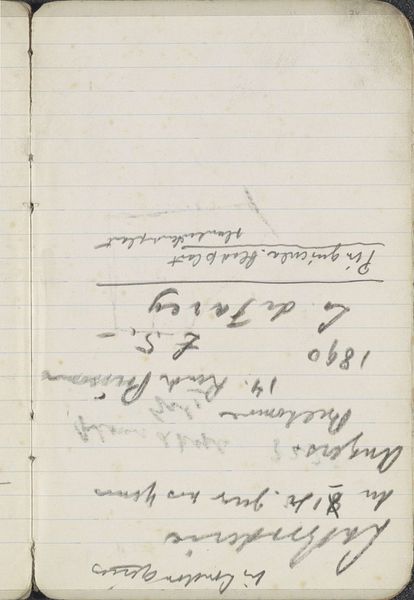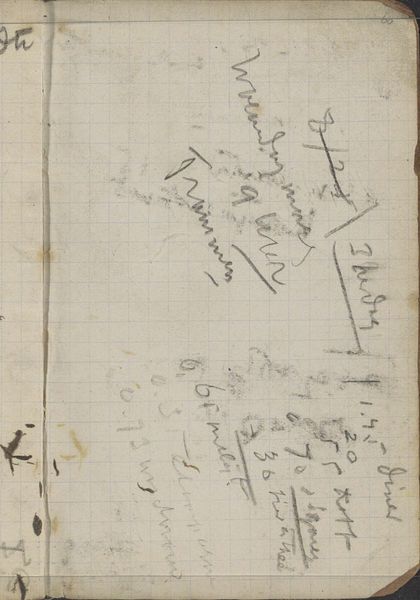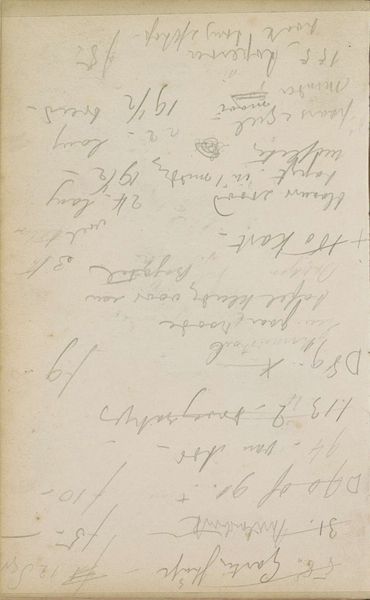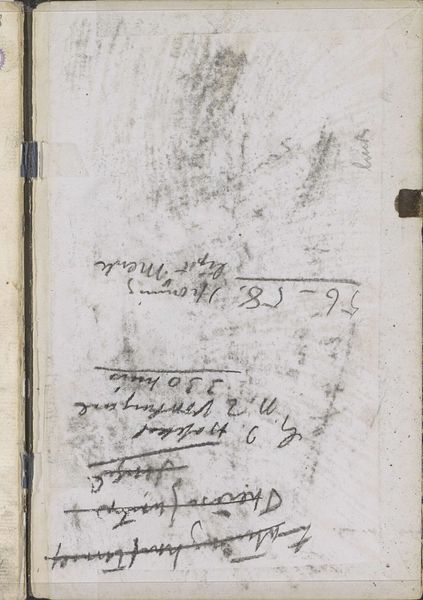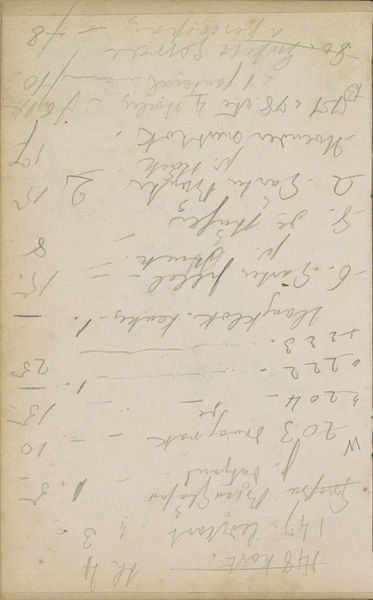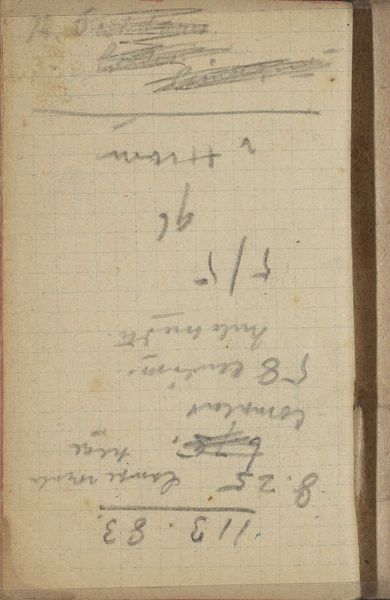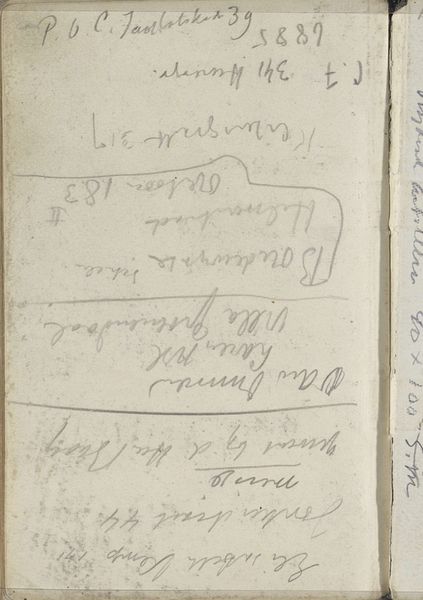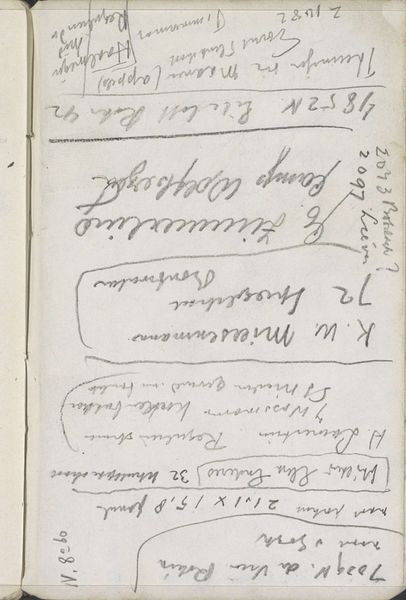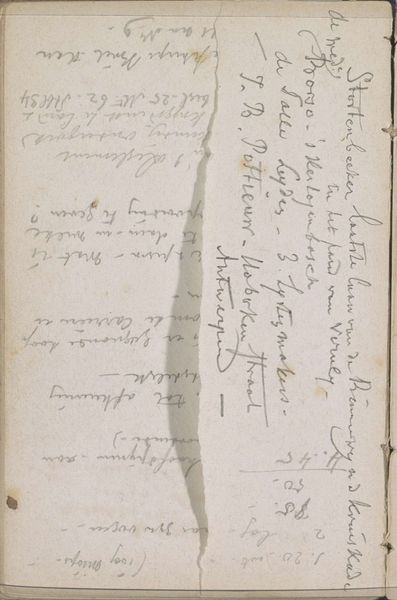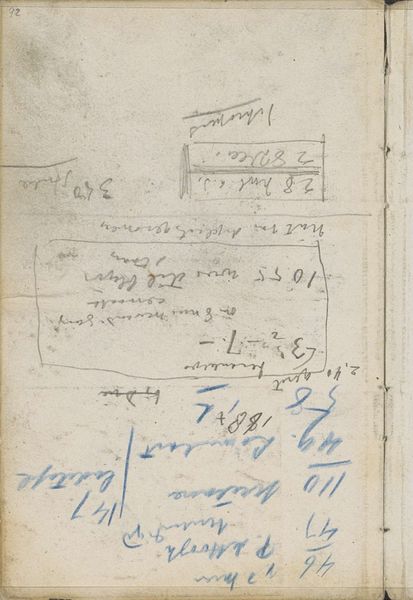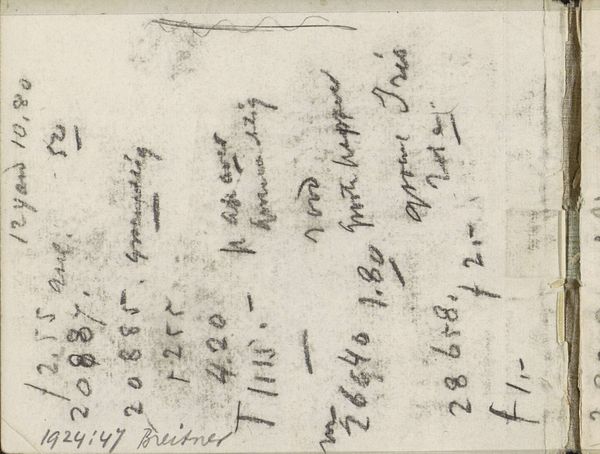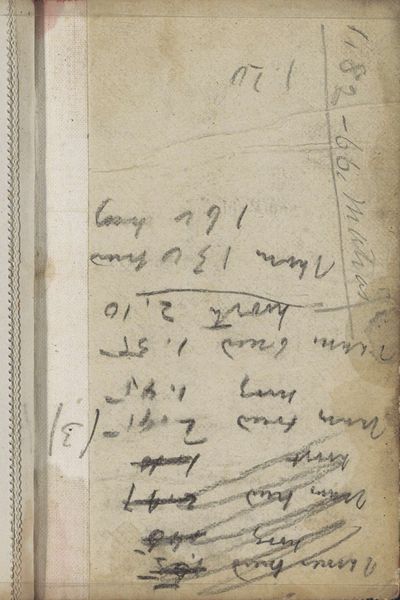
drawing, paper, ink, pencil, graphite
#
portrait
#
drawing
#
dutch-golden-age
#
paper
#
personal sketchbook
#
ink
#
pencil
#
graphite
#
academic-art
Copyright: Rijks Museum: Open Domain
Curator: This is "Annotations," a fascinating sketch by George Hendrik Breitner, created in 1893. It is currently housed here at the Rijksmuseum. This work provides insights into the artistic process, composed with pencil, graphite, and ink on paper. Editor: At first glance, it appears incredibly chaotic. It feels very personal and raw, as if glimpsing someone’s unfiltered thoughts laid bare. Curator: Breitner often captured street life and the working class of Amsterdam. What we see here could very well be a preparatory sketch, not intended for public consumption. A personal, working document used to remember and contextualize. We get to look over his shoulder. Editor: Absolutely. I wonder, though, about the deliberate nature of showcasing such an intimate piece. Whose gaze are we inviting? Is this 'chaos' aesthetic, serving to reinforce certain ideas about art production being 'natural' or intuitive? Is the museum displaying his entire archive and where else can the user find related drawings or studies? Curator: These are indeed fair points, and valid lines of inquiry when one looks at how artworks enter the public domain, how they become institutionalized and what broader societal messaging exists within. What’s striking is that despite the somewhat scattered appearance, there's still a sense of intent, as if he were trying to make sense of fleeting impressions and commit them to memory. There appears to be a portrait within all those lines of notes. Editor: Yes, there are discernible shapes that suggest portraiture. Thinking about its socio-political dimensions, I am intrigued to ask how works like these humanize a figure that may have remained unseen or uncared for within broader social spheres. Curator: Indeed. Art's unique ability lies in lending visibility and prompting reflection, underscoring the inherent worth of subjects often relegated to the margins of representation and challenging us to confront historical gaps in recognition. Editor: Precisely. It pushes us to rethink whose stories get told, and how, ultimately prompting questions about privilege and power. I appreciate that Breitner allows such a powerful experience. Curator: It is in such unpolished, candid pieces that we sometimes find the most resonant glimpses into both the artist and the world they sought to capture, which, perhaps, we can find echoes of today.
Comments
No comments
Be the first to comment and join the conversation on the ultimate creative platform.
